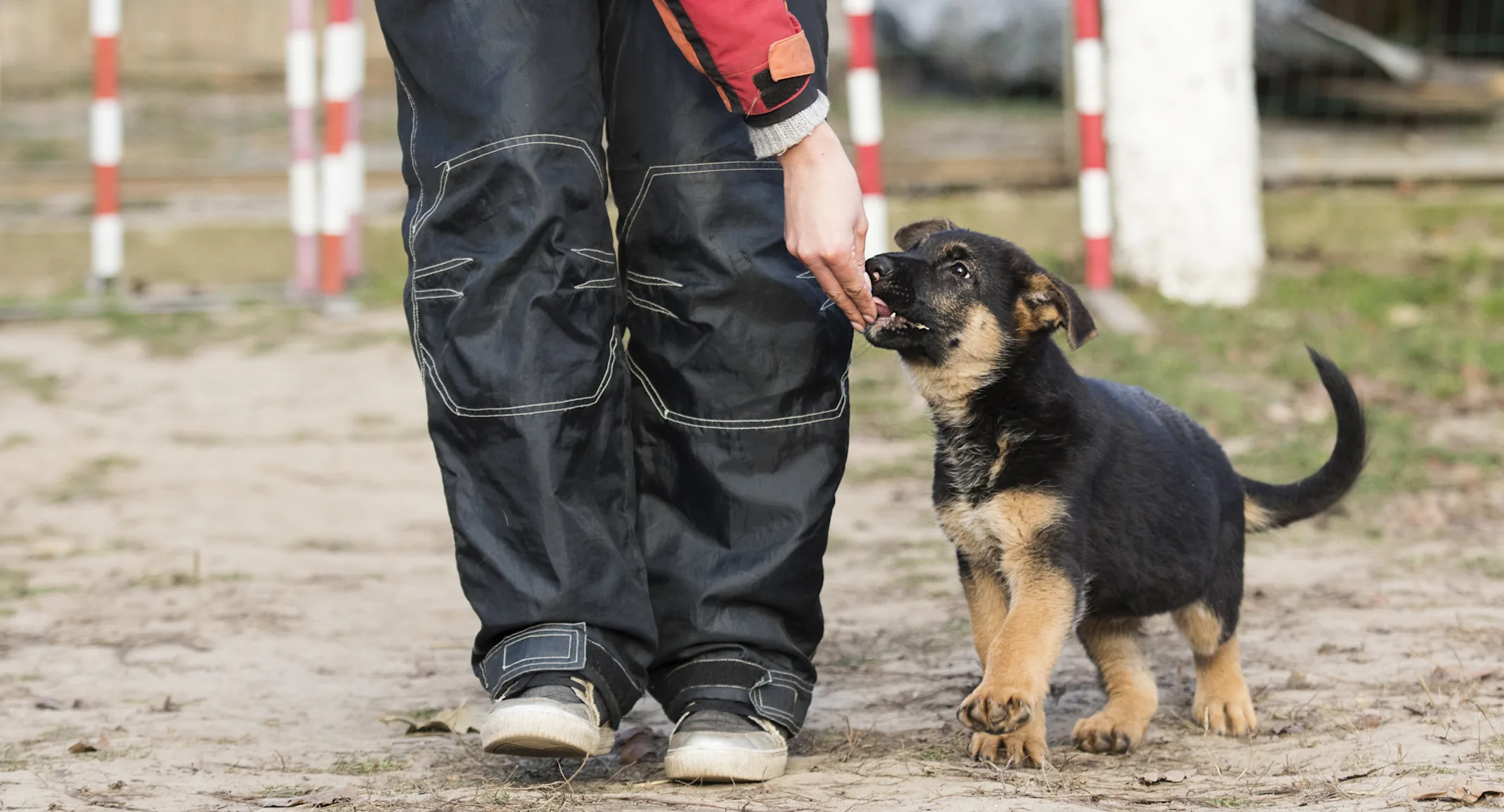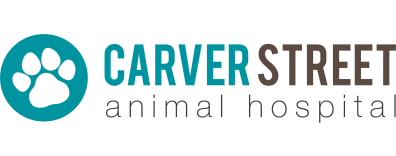Puppy Socialization
Dogs

What is socialization?
Socialization is the process during which the puppy develops relationships with other living beings in its environment. Two other important terms in a pup’s development are “habituation” and “localization”.
What is habituation?
As all animals develop there are numerous stimuli (sounds, smells, sights, and events) that when unfamiliar can lead to fear and anxiety. Habituation is the process whereby dogs get used to repeated stimuli, and stop reacting to them provided that there are no untoward consequences.
What is localization?
Localization is the process by which the puppy develops an attachment to particular places.
Why are these terms important?
To reduce the possibility of fearful responses as a puppy grows and matures, it is essential to expose young puppies to many stimuli (people, places, and things) when they can most effectively socialize, localize, and habituate to these stimuli. Early handling and events that occur during the first 2 to 4 months of life are critical factors in the social development of the dog. Dogs that receive insufficient exposure to people, other animals, and new environments during this time may develop irreversible fears, leading to timidity or aggression.
What can I do to improve my chances of having a social, non-fearful dog?
Pedigree
The genetics of the breed and of the parents in particular play an important role in how sociable, playful, fearful, excitable, or domineering a puppy becomes. Choose a breed and parents (both male and female) that have the type of behavior that you would like the puppy to have. Of course, there is a great deal of variability between individuals, so that breed and parental behavior will not always be indicative of what the puppy will be like.
Puppy assessment
Even the most social and playful of puppies may become fearful and aggressive as they develop out of puppyhood. Avoid selecting puppies that are shy, withdrawn, or fearful. But selecting a friendly and non-fearful puppy does not ensure that this behavior will persist into adulthood. Puppies under three months are still developing their social skills, but as puppies age, these criteria do begin to become more reliable. Assessing the behavior of the parents, and understanding the behavior of a breed is far more critical than assessing an individual puppy.
Early handling
Puppies that are stimulated and handled from birth to five weeks of age are more confident, social, exploratory, faster maturing, and better able to handle stress as they develop. Puppies obtained from a breeder or home where they have had frequent contact and interaction with people are likely to be more social and less fearful as they develop.
Primary socialization
There is a sensitive period in the development of most species when they develop social attachments with their own and other species, independent of punishment and rewards. In fact, both positive and negative events seem to accelerate socialization. The events that occur during this socialization period determines the puppy’s future social partners, as well as to what species it feels it belongs. By recognizing the critical time frame in which canine socialization develops, you can help to ensure a healthy social attachment to people and other animals, including other dogs.
The primary socialization period for dogs begins at 3 weeks of age and is diminishing by 12 weeks. Peak sensitivity is at 6 to 8 weeks. Beyond 12 weeks there is a tendency to act fearfully towards new people, animals, and situations. Many young dogs will regress or become fearful again if they do not receive continued social interaction as they grow and develop. The 6-8 month period is another important time for socialization.
To help a healthy social relationship with other dogs throughout life, dogs should maintain their social contacts with their mother and littermates until 6 to 8 weeks of age. They should continue to have regular social interaction and play sessions with other dogs after it is taken into a new home. The puppy would likely do best if there was another dog in the new home, or if it had playmates in the neighborhood that it could interact with on a daily basis.
What is the best age to obtain my new puppy?
Since it is so important for the puppy to develop and maintain social attachments to their own kind, puppies ideally will remain with their mother and littermates until about 7 weeks of age. Then when placed in the new home they can expand their social contacts to new people and species while still in their primary socialization period. By this time also puppies will begin to develop preferences for elimination sites, so that this timing can also be helpful for housetraining.
What can I do to assist my puppy in its social development?
There should be little problem with a puppy that is less than 12 weeks of age developing healthy and lasting attachments to the people, sights, and sounds in its new home. Your puppy is most likely to become fearful of stimuli that are not found in its day-to-day routine. Make a conscious effort to identify those people and situations that the puppy is not regularly exposed to. For example, if there are no children in the home, you might arrange regular play sessions with children. If you live in the country, make a few trips into the city, so that the puppy can be taken for walks on city streets, or through neighborhood plazas. Conversely, a puppy that grows up in the city might become fearful or aggressive toward farm animals that it was not exposed to during its early development.
Introduce your puppy to as many new people and situations as possible, beginning in its first three months of development. People in uniforms, babies, toddlers, the elderly, and the physically challenged are just a few examples that might lead to fear and anxiety unless there is sufficient early exposure. Similarly, car rides, elevators, stairs, or the noises of cars, trains, airplanes, or hot air balloons are some examples of events and experiences to which the puppy might be usefully exposed.
One way to facilitate the introduction of the puppy to new situations and people is to provide a reward such as a favorite toy or biscuit each time it is exposed to a new stimulus. Having a stranger offer a biscuit to the puppy will teach it to look forward to meeting people and discourage hand-shyness since the puppy will learn to associate new friends and an outstretched hand with something positive. Once the puppy has learned to sit on command, have each new friend ask it to sit before giving the biscuit. This teaches a proper greeting and will make the puppy less likely to jump up on people.
Be certain that the puppy has the opportunity to meet and receive treats from a wide variety of people of all ages, races, appearances, and both sexes during the formative months. There will, of course, be times when your puppy is in a new situation and you do not have treats. Be sure then to use a happy tone of voice and encourage your puppy.
If your puppy seems to panic, back off a little and try again later, rather than aggravating the fear. Never reassure the fearful dog as this might serve to reward the fearful behavior.
Is it healthy to take my puppy out in public at such a young age?
There is always a concern about the risks of taking the puppy out of its home before it is fully vaccinated because it may be exposed to infection before the vaccines have had time to become protective. However, benefits gained from these new and early public appearances can be enormous and without them, the risk of the puppy developing permanent fears or anxiety is a serious concern.
One solution is to have people and healthy vaccinated animals visit the puppy in its own home until it is sufficiently vaccinated to be taken out. A compromise is to take the puppy out to meet people and other pets in low-risk environments. As long as vaccines are up-to-date, taking the puppy for walks along the sidewalk and avoiding neighborhood parks where stools and urine might accumulate is generally safe and effective.
Another valuable aid is to enroll the puppy in puppy socialization classes. If these classes are held indoors in a room that can be cleaned and disinfected, and all puppies are screened for vaccination and health prior to each class, these classes provide varied and plentiful exposure to people and other dogs, ina low-risk environment.
